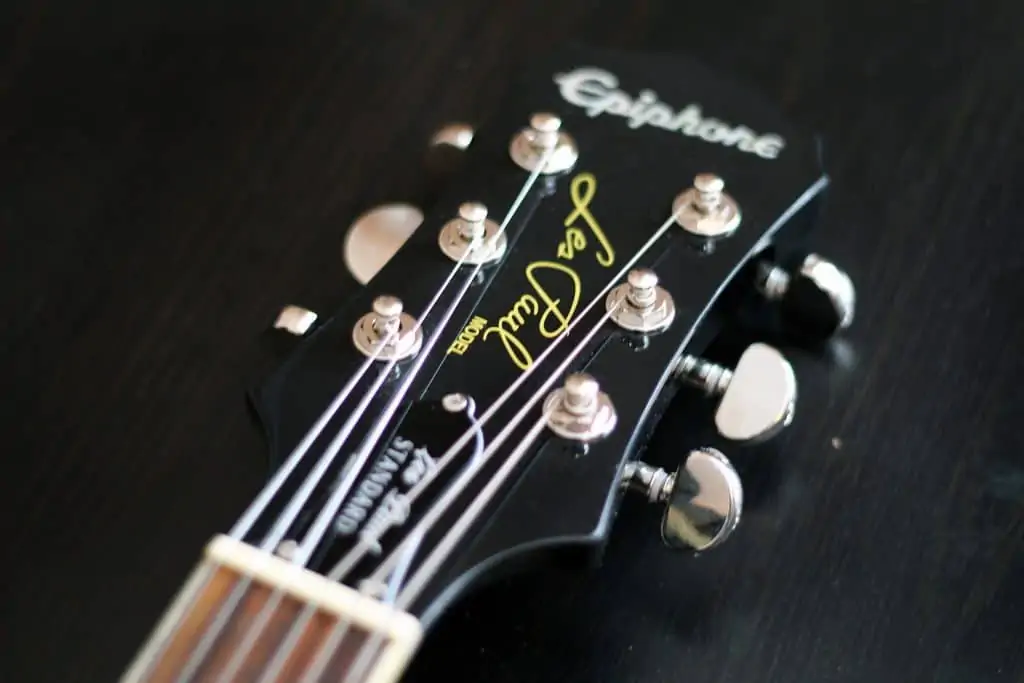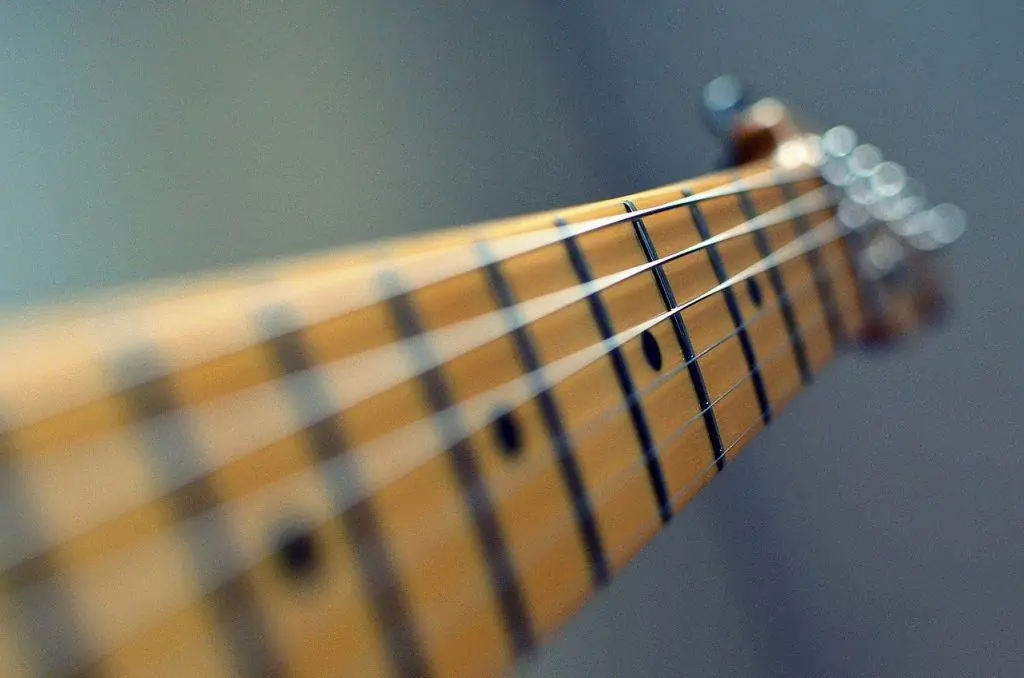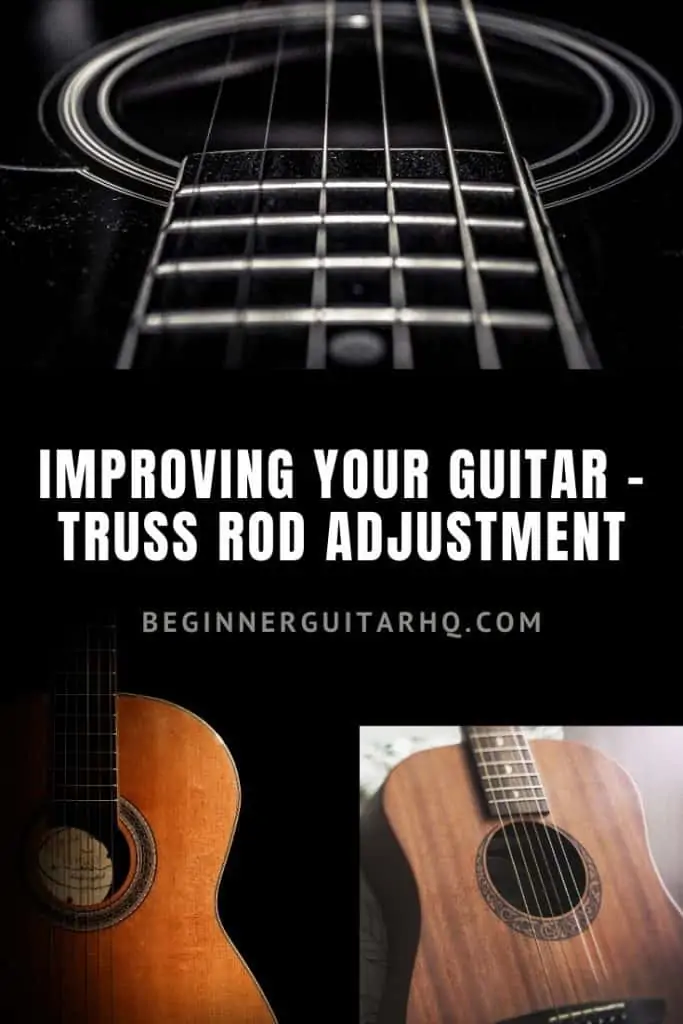Have you been noticing that you’ve been getting a little fret buzz as of late? How about your strings – do they feel like they’re a little too far from the fretboard? Are you finding it hard to fret a note, or is the playability of your guitar less than ideal? If you’ve recently changed the string gauge on your guitar, or have left it unstrung or unplayed for a large amount of time – or if you’ve carried out other DIY upgrades or changes to your guitar – you might have found that the playability has been affected. However, the playability of your guitar is also something that should be maintained the same way as you clean, polish and take care of other aspects of your instrument.
If you feel as though your guitar playing skills are being limited by how playable your guitar is, you might be in need of a truss rod adjustment — but hold on! You don’t need to head to your local guitar shop or luthier; a truss rod adjustment is something that you can take care of in your own home in just a couple of minutes. In this guide, I’m going to describe what a truss rod adjustment is, how it can help, how to tell whether you need a truss rod adjustment, the tools that you’ll need and finally how exactly to perform a truss rod adjustment.
Contents
What is a truss rod?
It’s all very well and good knowing that you need to adjust the truss rod of your guitar – but what exactly is a truss rod, anyway? Inside the neck of your guitar, just underneath the fretboard, lay into a small groove cut in the wood, there’s a rod of steel, graphite or other metal. This rod runs the entire length of your fretboard, starting just below the headstock and finishing at the base of the neck. It’s typically threaded at both ends (allowing for adjustments in both directions – we’ll get into exactly what carrying out a truss rod adjustment in either direction will do at the end of this article). There are also truss rods that are not threaded at either end. Truss rods aren’t installed in every single guitar, but they are installed in most of them, especially the more popular or modern ones.
Okay, great – a truss rod is a metal rod that runs through the neck of the guitar. But what’s it there for?
How does a truss rod work?
The guitar is an instrument that works due to tension. The strings are wound very tight around the tuning pegs, and stretched out from the bridge, all the way up the neck. Guitar strings aren’t just cotton or fibre though – they’re nylon, or steel, or nickel-wound – they can even be pure nickel! These materials are tough and hard-wearing, which is perfect for an instrument that needs to stand up to a beating, but stretching metal out and keeping it taught exerts a lot of stress on your guitar neck. The wood of your guitar neck is not strong enough to hold up to that strain for a long amount of time; the pull of the strings would eventually cause your neck to “bow”, pulling the headstock back towards the neck and ruining the tuning and playability of your guitar.
This is where the truss rod comes in. Installed in the neck, it adds a great deal of stability and resilience, and offers the neck enough strength to prevent the strings from pulling the headstock in towards the body, instead keeping them taught and tuned the way just the way you want. However, it doesn’t last forever – the strings do eventually pull on the neck, time wears away the structure of the neck, too much humidity (or lack thereof) will dry out and possibly bend the neck (which is why it can be useful to get a humidifier), if you leave your guitar leaning up against something with the weight on the headstock for a long time it could bend – they’re pretty fragile things!
Thankfully, when a guitar neck bends out of shape, the truss rod is there to help you out! As long as the truss rod is threaded at one end (or both), you’ll be able to get in there and carry out a truss rod adjustment, adjusting the bend of the neck either way to fix the issue. It is understandable that the truss rod adjustment has long been the realm of luthiers and guitar technicians alone; obviously, it’s an important piece of your guitar and if you adjust it too much you could damage the neck – and what is a guitar without a neck? Unplayable! The neck can be an expensive repair or replacement, so people are generally happy to hand this kind of DIY improvement or fix over to a trained professional. But there’s really no need to be worried – it’s a small, quick fix and as long as you take it slow (just like restringing your guitar, or tuning your guitar) you’ll have no issues.
There’s no need to carry a truss rod adjustment out unnecessarily though – so let’s find out whether you actually need to do one.
Do you need a truss rod adjustment?
While the truss rod adjustment is a pretty simple procedure and I’ll walk you through the tools you need and the steps you need to follow to carry it out towards the end of this post, it’s still a good idea to diagnose any problems you’re having with your guitar and make sure that a truss rod adjustment is actually the cure, to save you wasting any time or effort in adjusting the truss rod, and possibly damaging the neck, if that’s not actually going to fix the problems you’re facing.
Fret Buzz
When you play an open E string, does it ring out clearly all the way, or do you hear an uncomfortable rattling buzz? How about if you fret a note on the A string? Does every fret on the neck sound good, or do you hear any buzzing? Fret buzz is fairly common and sounds awful. It will almost always happen if you strike a string very hard, but if you play a string at a normal strength you shouldn’t hear any buzzing.
If you do hear buzz, you’re potentially going to need to adjust your neck relief. This is done via a truss rod adjustment – so good news, read on! However, it is also possible that the issue here is the action of your guitar – the action of your guitar and relief of the neck of your guitar are very closely related, so it can be hard to tell exactly which one you need to work on just through fret buzz alone. It could be time to move on to another test – the Sight test.
The Sight Test
Probably the easiest test you can carry out to determine whether you need a truss rod adjustment – all you need to do is look! Tune your guitar to the tuning you’re looking to play in (probably EADGBE but it could be anything you want, like Drop D tuning) and let it settle. Hold the guitar upright, turn it sideways and tilt it back towards you, looking down the neck (from the headstock towards the bridge) like a telescope while you close one eye. Does it look straight? Or does it bend in the middle? Adding relief to your guitar neck will make the most difference around the middle of the fretboard (frets 3 to 9), so make sure you’re paying attention to the middle. Run a finger down the fretboard as you’re looking down it to make sure that you can’t see any curvature at all – but if you do see any, don’t worry – a truss rod adjustment will help you out.
If you’re having trouble telling whether there’s a curve or not, try looking at the thickest string (the low E), and the edge of the neck, and making sure that they run as parallel as they can – if the line of the outside of the neck and the string, don’t run alongside each other all the way down, you might have a bend on your hands.
It doesn’t hurt to make sure though, so let’s move on to one more test.
The Tap Test
You can use the strings themselves to test whether there’s too much bow in either direction, and to tell you whether you need to adjust the truss rod of your guitar. To do this test, you need to hold your guitar as though you’re playing it, and put your finger on the first fret of the low E string, pushing down as though you’re going to play the note. Then, with your pinky finger on your strumming hand, fret a note on the high E at around the twelfth to fourteenth frets (or wherever the neck joins the body of your guitar). Once the string is pinned down at both ends, use your index finger from your strumming hand to fret a note in between the two – or as in-between as you can manage if you’ve got small hands! Ideally, you’ll be holding down the 1st fret, the 12th fret, and poking the 7th fret with your index finger.
How much space is there between the bottom of the string and the top of the 7th fret? Is there a lot? If you push down gently on the seventh fret, does it move? Does it tap against the fret? If so, you might benefit from a truss rod adjustment. If not – you’re probably in the clear as far as the truss rod goes, and might need to adjust the action, the nut height, or a variety of other parts of your guitar to resolve your issues.
What tools will you need for a truss rod adjustment?
You’re going to need to grab a screwdriver (if you need to get a plate off that’s in front of the truss rod – not every guitar has one of these), and an allen key that’s the proper size for your truss rod. It’s that simple! There are a few other things you could grab, though – for instance, it might be helpful to have a neck rest for your guitar so that you can work comfortably.
It could also be useful to have an electric tuner or a tuning pedal, as you’ll be needing to detune and retune your guitar throughout this process. It might also be helpful to have a capo on hand, to fret the lower notes.
How to perform a truss rod adjustment
Alright – you’ve determined that a truss rod adjustment is necessary, and you’ve got your tools. It’s time to get down to business! Unscrew the plate that’s over the truss road (You’ll see it at the base of the headstock, on the front, just behind the nut – if there’s no plate there (as on Stratocasters), then you’re in luck; that’s one less step you need to carry out!

Next, slide the allen key into the hole, and slot it into the top of the truss rod. Now you’ll need to twist either one way or the other depending on what you’ve seen wrong with the neck.

If you’ve got an upbow (your guitar neck is concave, the headstock is moving upwards towards the front of the guitar), you’ll need to tighten the rod, twisting right, decreasing relief. If you’ve got a backbow (the guitar neck is convex, the headstock is being pulled downwards, behind the guitar) then you will need to twist the other way – left – to add relief and let the neck bend forward. A very slight upbow is recommended by some luthiers when performing a truss rod adjustment. Remember – righty tighty, lefty loosey! Be careful to take it very slow – you’ll want to turn by no more than a quarter-inch at a time. After each turn, tune your guitar, test the neck out under tension, and then readjust if necessary. You can use a string gauge to figure out exactly how far from the fretboard you want your strings to sit, but you could also test using the tests I mentioned above. Once you’re sorted and happy, leave the guitar to sit for a while. Some necks have to be given time to settle, and you may need another truss rod adjustment in the future – just like stringing your guitar.
Be very careful to not over-turn. If you find that it’s getting hard to get the truss rod to turn, but you’re not quite where you want yet, then stop. Let the neck settle, come back to it later. If it’s still not easy to turn the rod, stop what you’re doing and take the guitar to a technician – don’t risk breaking the neck.
A double truss rod (like the one in the Cordoba C7) and a single threaded truss rod allow for varying degrees of control over the relief of your neck. Essentially, with a single threaded rod, you can only tighten it and decrease tension. When you loosen the rod, you’re not actually causing the rod to bend the other way; you’re just relaxing it so that the strings pull the neck back into a natural position. The trouble with single-threaded rods is that they cannot be ‘loosened’ further than the initial state of the rod, which means if you’ve relaxed it as far as it’ll go and your neck is still not ideal, you’re going to need to hand it over to a luthier – there’s something more serious needed. A double truss rod means you can correct bigger issues in either direction with a single truss rod adjustment.
So – that’s our guide to carrying out a truss rod adjustment at home! Good luck – remember, take it slow and easy; because you really don’t want to break your neck.


